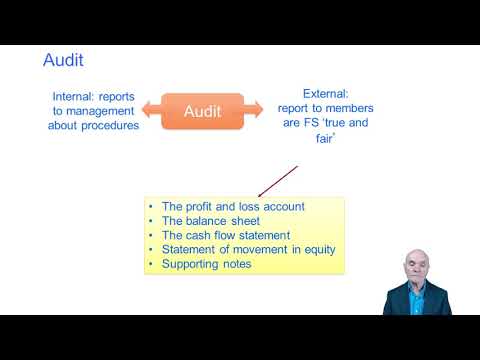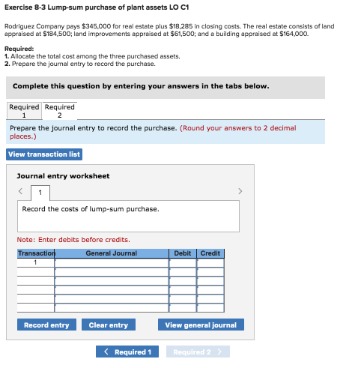
Specific reserves are created and utilized for the purpose only for which they are created, like dividend equalization reserve and debenture redemption reserve. A guarantee occurs when one business takes responsibility for another business’s fiscal debts if that business can’t settle its arrears. A company may make such a guarantee if it has a vested interest in the success of the other business. Tax provision software such as Thomson Reuters ONESOURCE™ Tax Provision gives your organization the ability to balance compliance needs with accurate tax provisioning while ensuring a defendable process. We undertake various activities to support the consistent application of IFRS Standards, which includes implementation support for recently issued Standards.

Adjusting events are therefore recognized
in the financial statements in line with the IPSAS guidance applicable to
the issue. The term “reserves” refers to keeping a portion of earnings for future usage. These are set aside to help a company’s financial condition and to cover unexpected obligations and losses.
Talk with our team or check out these resources.
Only relevant expenditure
should be offset against a provision (i.e. only those costs for which
the provision was originally intended can result in the ‘utilization’ of the provision). Provisions should be discounted to the
present value of the outflows required to settle the obligation where the
effect of the time value of money is material. The discount rate will be
based on the opportunity cost which is the rate of return that could have been
earned from investments held in Cash Pools.
China’s new accounting rules on data to have ‘greater impact’ on Big Tech firms – South China Morning Post
China’s new accounting rules on data to have ‘greater impact’ on Big Tech firms.
Posted: Thu, 24 Aug 2023 07:00:00 GMT [source]
If we assume a 10% discount rate in this case, the present value of the $12,000,000 obligation is $1,783,724. An essential step in creating a provision is to estimate the number of finances to set away. Companies will frequently review their guests, recent fiscal statements, or assiduity pars to establish the estimated size of the provision. For illustration, a company may estimate the quantum of profit that will be uncollectible grounded on literal bad debt.
Is a provision always created equal to what has been estimated?
Firms and people who receive loans from financial institutions tend to use this specific type of provisioning for loan loss. No matter what type of borrower the borrower is, provisioning is the same. Despite better regulations and screening, loan defaults remain a reality in banks and other financial institutions. For such institutions, accounting software that allows loan loss provision is essential. The objective of this chapter is to give an
overview of the accounting lifecycle of provisions recognition as well as
contingent liabilities and contingent assets note disclosure requirements. Icarus Aviation Ltd. has just purchased a small, existing airport that provides local commuter flights to downtown businesses in Edwardston.
- If the probability is considered remote (i.e. highly
unlikely), no entries or disclosures should be made. - IAS 37 requires the use of a discount rate that reflects current market conditions and the risks specific to the liability.
- Loan loss vittles can be used to cover insolvencies, loan defaults, and reasoned loans that affect entering lower payments than first estimated.
- When it comes to assets, it is deducted from the purchase, but when it comes to liabilities, it is shown as a liability.
- Despite such regulatory improvements, banks still need to take into account loan defaults and the expenses for loan origination.
While both provision and reserves reduce earnings, provision is required to cover known future expenses. Liabilities must be acknowledged when they emerge, which is why provisions have been established. Reserves tend to be a bit different; they’re set up to save money for the future, therefore experts recommend them. Provision for Taxation – It is established and maintained to cover the income tax bill for the current year. This provision is made by debiting the income tax amount from the profit and loss account for that year and depositing the tax with the department upon which provision for taxation amount is recorded. General reserves are created for any future contingency or to utilize at the time of expansion of a business.
Related IFRS Standards
In 20X1 an interim payment of USD 1.5
million was paid and an estimated USD 500,000 remains at the end of the
reporting period (this is still a provision rather than an accrual due to the
uncertainty of amount and timing). The USD 1.5 million decrease is confirmed by
the report run from Umoja which showed Dr Expenses and Cr Accounts Payable. In 20X0, the claim was deemed to have met the provisions
recognition criteria and a provision of USD 2 million was recognized as at 31
December 20X0. Based on the information received for 31 December 20X1, the
claim still meets these recognition criteria, and thus a provision for this
claim should be maintained. The OLA increased the estimate of the probable settlement by
USD 1 million from USD 5 million to USD 6 million. In 20X0, the claim was deemed to have met the provisions
recognition criteria and a provision of USD 5 million was recognized as at 31
December 20X0.
Provisions therefore adjust the current year balance to be more accurate by ensuring that costs are recognised in the same accounting period as the relevant expenses. A provision is the amount of an expense that an entity elects to recognize now, before it has precise information expenditure definition, expense vs expenditure, and types about the exact amount of the expense. For example, an entity routinely records provisions for bad debts, sales allowances, and inventory obsolescence. An example of a provision could be a car company setting aside money for warranty repairs for the last quarter of the year.
What are APIs and how can they streamline tax provision calculations?
GAAP lays out its information in Accounting Standards Codification (ASC) 410, 420, and 450, and IFRS lays out its information in International Accounting Standard (IAS) 37. A specific provision – in which specific debts are identified – is allowed as a tax deduction if there is documentary evidence to indicate that these debts are unlikely to be paid. Provisions are not recognized for operational costs, which are expenses that need to be incurred by an entity to operate in the future. To cover unforeseen obligations, a business sets aside a portion of its profits. A portion of money from the business is set aside for meeting known liabilities or expenses. Total depreciation is if you calculate the amount of depreciation as accumulated depreciation.

A careful reading of this definition will lead us to the conclusion that a contingent liability does not meet the general definition of a liability. The obligation may not be present due to the uncertainty of future events, or the uncertainty may make it impossible to determine if or how many economic resources will be outflowing in the future. For these reasons, the standard does not allow contingent liabilities to be recognized.
Provisions in accounting
Following this reversal, the correct
accounting entries for 20X1 can then be considered. Now that all relevant information has been
received and reviewed, the Accounts Division can determine the accounting
impact based on the information provided by OLA. There is a present obligation that
probably requires an outflow of resources.
In making these judgments, the accountant will need to be aware that the subjective nature of these estimates may lead to earnings management or other attempts to manipulate the result. As always, the integrity of the reported amounts depends on the accountant’s skillful and professional application of the standard. It improves a company’s financial situation by increasing working capital. Except for some specific reserves, profit is required for the formation of reserves. Provision Depreciation – It is the amount of depreciation that will be taken in that accounting year.
IAS 12 — Accounting for uncertainties in income taxes
As it is possible that the actual warranty costs will not be the same as the predicted costs, an additional adjustment to profit or loss will be required when the warranty term expires in order to reduce the provision to zero. A reserve is a quantity or percentage of earnings that a firm preserves or sets aside at the conclusion of a fiscal year to cover future eventualities. Being utilised for asset expansion, dividend payments, and investments helps to stabilise a company’s financial condition. Asset impairments are when the current request value of an asset drops below the carrying value recorded on the company’s balance distance. Recording the impairment as a provision prevents embellishment of the asset’s value.
برچسب ها: